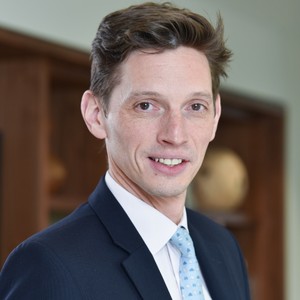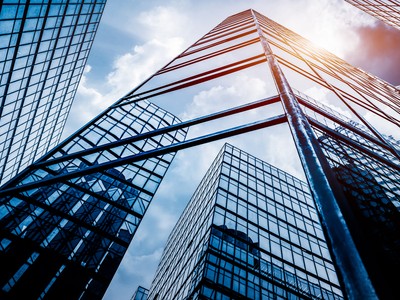The AI revolution is set to transform our lives beyond recognition within the next 5 years – but regulators and investors need to keep up with the pace of change.
That is the key takeaway from the All-In CEO Summit at UCLA in California – an annual convention of the world’s most influential figures in technology, from those leading the tech behemoths, such as Elon Musk, to political figures attempting to shape the legislative and regulatory landscape appropriately to keep up with the rapid pace of technological change, such as J D Vance, Vice-Presidential Candidate.
The scale and influence of the big tech companies cannot be underestimated: the Artificial Intelligence (AI) revolution is already touching many facets of our working and personal lives, whilst the companies themselves exert a dominance over the direction of global markets. Microsoft Corp., Apple Inc., Nvidia Corp., Alphabet Inc., Amazon.com Inc. and Meta Platforms Inc account for around 30% of the entire market capitalisation of the S&P 500 Index of America’s biggest companies.
Will technological advances provide wide-ranging improvements to productivity and boost wellbeing, or will such disruption produce social disharmony and conflict? How do politicians weave these advances into well entrenched government-backed programmes and balance the needs of aging populations with the need to reduce deficits and grow the economy?
JM Finn Investment Director Freddy Colquhoun attended the summit: in this special report, he pulls out the overarching themes and highlights from some of the individual speakers.
Politics
J D Vance - Vice Presidential Candidate
Venture Capital
Peter Thiel – CEO at Founders Fund
Corporate CEOs
Elon Musk – Founder / CEO at Tesla & SpaceX
Nikesh Arora – Chairman CEO at Palo Alto Networks
Tekedra Mawakana – Co-CEO at Waymo
Marc Benioff – Founder, Chairman & CEO Salesforce
Sergey Brin – Co-Founder at Google
Summit synopsis: political leaders must strike the right balance in harnessing the AI revolution in order for it to benefit society as a whole whilst ensuring social cohesion is maintained through a transformative period in human development.
The summit provided clear evidence of the speed and quantum at which technology is advancing, propelled by AI. The sectors at the forefront of these advances include software providers (e.g. Salesforce) where Agents (human-like AI) will become commonplace in solving problems, robotics and automation, power generation and healthcare. Many speakers highlighted that today is a pivotal moment in the history of human advancement which is pulling in early technology pioneers, such as Sergey Brin, Co-Founder of Google, who is now back as a full-time computer scientist at Google.
A common thread running through the summit was the constraints of regulation on many sectors of the US economy; regulatory capture over the years has led to less progress than otherwise would have been the case and has led to other countries catching up with the US. There appears to be a demographic problem within many regulatory bodies as a large cohort of industry experts have now retired from bodies, and the current cohort are simply not as experienced. Some of the rules are also not applicable to some new technologies; CEOs developing robo cars and planes cited this failure of regulation to keep up with and adapt to industry development as a major problem. For example, driverless flying taxis will launch in the Middle East in 2 years’ time, but not in the US due to regulatory delays.
There is also a deep mistrust of Washington DC elites amongst the mainly Californian delegates. Many cited the ‘deep state’ operating within Washington and the mainstream press stretching back over the last 30 years since the fall of the Berlin Wall. The political professors Jeffrey Sachs and John Mearsheimer highlighted that Dick Cheney’s recent endorsement of the Harris campaign epitomises this. The consensus among many speakers was that US foreign policy since the Bill Clinton presidency has deliberately maximised US hegemony and vested interests in Washington which would continue under Harris, with dangerous consequences for global order. Freedom of speech was also cited as being under threat, which has led many broadcasters and journalists to leave established news outlets such as the New York Times and Fox News (such as Megyn Kelly).
There was clear recognition that the size of Federal Government needs shrinking. Today, over 50% of US employees receive their salaries directly or indirectly from the US government. The fiscal position is also deemed to be close to unsustainable: the interest bill on government debt
is now the same size as the annual defence budget each year, history suggests this could be a tipping point in debt sustainability. The wish from many speakers is for the new President to act decisively to cut back the role of the government, and this is more likely to happen under Donald Trump than Harris. The delegates were predominantly pro Trump rather than Harris, given that most were Founders or Venture Capitalists who have more to lose from higher taxes under Harris. I thought that J D Vance articulated a well-constructed argument on their economic policy programme without making the type of controversial comments that have been heavily reported on. He was interviewed for over 1 hour, answered questions for supporters and opponents and it highlighted to me the benefit of listening to a long-form challenging discussion rather than shortened clips from the internet and media outlets. Kamala Harris has only recently started to face challenging interviewers in the campaign, which is likely to impact her prosects of victory in my opinion.
From an investor’s perspective, some of the CEOs on show were most impressive; Palo Alto Networks and Salesforce CEOs were among the standout highlights for me. Perhaps most interesting was Elon Musk: on stage for over an hour, he initially spent time discussing X (Twitter) but then gave the audience a fascinating insight into the ambitions of SpaceX over the next few years, as well as progress on Tesla’s Dojo supercomputer and Optimus robots, which will number approximately 1 million within the next 6 years. Musk claimed that within 10 years a significant percentage of us will have a robot in our houses. NASA want to land astronauts on the moon in 2026 when they will be using a SpaceX starship, demonstrating how integral Space X is to the success of the upcoming NASA Artemis missions. Woody Hoburg, a US astronaut, articulated how future space missions will be conducted, and missions to Mars are not out of the question in many of our lifetimes. SpaceX looks like an immensely valuable company.
There remains no lack of ambition from Silicon Valley. The presentations showed us how much has been achieved in healthcare, robotics, automation, payment and software solutions as well as more Moonshot ideas. Innovation at this speed and scale is both inspiring and concerning; there is likely to be social friction as humans get displaced from knowledge roles and replaced by Agents.
Politicians need to be cognisant of the threats and opportunities and ensure that these advances benefit everyone in a tangible and humane way. Which Presidential candidate is best placed to provide this for the US electorate? I think the answer to this will depend to a large degree on who the victor brings in to their team / cabinet and their relationship with Congress. If Trump wins, expect a flurry of executive orders early in his term on economic policy and migration which Harris will bring a sense of status quo. The mood amongst delegates was one of optimism tempered by frustration with Washington and concern over the geopolitical backdrop deteriorating from here.
J D Vance, Vice-Presidential Candidate.
Vance discussed the significant negative impact of regulation on the economy, noting that 80% of the economy is wrapped up by regulation. GDP growth of +0-2% makes it much harder for the whole country to feel the benefits of capitalism compared with growth of +5-6%. It divides the country between the haves and have nots. Only tech has shown strong growth whereas other sectors have not. This needs to change and that is why they will promote pro-growth policies.
He highlighted that wages had stagnated, in real terms, since 1984, except during Trump’s first tenure as President. To offset against the threat of inflation they will look to cut back the Federal Government and cut spending to reduce America’s deficit, which currently stands at US$1.7 trillion. His approach to achieve this would be to cut illegal immigration and, as one example, reduce costly inefficiencies in US defence procurement. Government departments would see cuts and improvements in AI will produce productivity gains.
Vance expressed concerns about Big Tech's threat to free speech and the need to distinguish between Little Tech and Big Tech. Expect a combative White House against the likes of Meta and Google.
He spoke about the need to better balance capital flows and goods flows between trading countries. In order to achieve this, he called for an increase in US manufacturing reshoring to reduce dependence on China. Trump has previously commented on penalising US corporates for operating in overseas jurisdictions, as he feels the US needs more native manufacturing and to be more self-reliant.
Lastly, he called for an easing of regulation in the transportation, energy and home construction sectors in order to boost GDP growth. How do we get 2-300bps of extra growth? A lot will come from deregulation, AI, development of Web 3 and interestingly perhaps, from blockchain and cryptocurrencies.
Sergey Brin, Co-Founder of Google
Brin previously left Google in 2019 but did not want to miss out on the transformative moment in AI and so he is now back working full time at Google, writing code and leveraging AI to assist in coding.
Demand for 'Google Cloud' from enterprises is outpacing the available supply –and Google are having to turn away customers. To fill the gap, Google, Microsoft and Amazon are continuing to invest heavily in building capacity.
Brin discussed the significant advances in robotics and expressed regret over selling some of Google's robotics companies too early. Although they are not yet at the desired level of accuracy, he is optimistic about achieving this within the next five years. Accuracy is currently around 90%. The remaining 10% is expensive and hard to achieve but getting there “will be wonderful.”
He believes that large language models (LLMs) will converge into a unified infrastructure, providing real value to humanity. Brin highlighted the competitive race with products from other AI companies such as Chat GPT and reiterated Google's commitment to putting their technology out into the real world now, rather than waiting for it to be perfect, because the benefit to the world is too great to wait.
Tekedra Mawakana, Co-CEO of Waymo
Autonomous vehicle company Waymo was formerly part of Google's Moonshot division and spun out as a separate operation in 2016 – although it remains 100% owned by Alphabet, Google’s parent company. The company recently raised US$5 billion and aims to be ‘the world's most trusted driver’. Mawakana discussed the company's progress in autonomous driving: their vehicles use a combination of lidar (light detection & ranging), radar and cameras. Tesla do not use lidar, which is a key differential.
The company has completed over 22 million fully autonomous rides and 100,000 trips per week with zero fatalities. The company has achieved an accident rate 73% below that of human drivers in San Francisco and Phoenix, where testing has been taking place.
Waymo is now testing on highways and in various weather conditions, including fog and sandstorms. Testing was initially focused on urban areas, as driving conditions there are more unpredictable. The cost per car including the driverless system is currently circa US$125,000, but Mawakana mentioned that over 30% of users use Waymo for everyday reasons, such as going to the doctor or to local businesses - therefore the scope of use is not just for tourism or the novelty value. Waymo may consider licensing the technology to other manufacturers and fleets.
Elon Musk, CEO of Tesla, SpaceX, and X Corp
Musk discussed regulatory challenges. His biggest gripe is over the regulatory capture that he feels is handicapping American exceptionalism - citing an example where SpaceX was fined US$140,000 by regulators for not having a permit to discharge water over their launch site in the US.
He highlighted the progress of SpaceX's Starship and the company's role in upcoming NASA Artemis missions. At the time of the conference, the Polaris mission was just about to leave from Cape Canaveral, reaching the highest altitude since Apollo for the first private spacewalk. The next flight of Starship is facing a bureaucracy ridden wait for regulatory approval.
Musk covered progress with the Dojo supercomputer at Tesla, which is currently on the first iteration. Dojo is designed and built by Tesla for computer vision video processing and recognition. Dojo’s aim is to improve the Full Self Driving (FSD) element of the Tesla proposition. He believes that by the end of 2026 they will be on the third iteration, and it will be able to be fully applied with inference on a tiny computer in each car.
Musk also discussed the outlook for Optimus, their humanoid robot. They want to create three versions of it: their intent is to scale to a million units plus per annum and then the cost of these would come down to US$20,000 – less than a small car. In 2025 they will have version 2 and then maybe in 5 years’ time version 3 will come out. He believes that these robots will vastly exceed humans in time to a rate of 2 or 3 robots to 1 human – many of which will be in factories.
The AI revolution will create some crisis of meaning among humankind because computers are already better than humans at lots of things. General purpose humanoid robots and autonomous cars will mean no limits to the economy.
He is optimistic on AI and believes there is an 80% chance that there will be a world of abundance that humans will thrive in, but also a 20% chance that there is a bad outcome that could lead to human extinction.
Peter Thiel, CEO of The Founders Fund
The Founders Fund is a San Franciso-based Venture Capital company that invests in companies that are leading the way in the AI technology revolution. Thiel is a Trump supporter who believes Trump will win the next election but anticipates buyer's remorse among the American electorate post-win, (i.e., markets may pull back – buy the rumour / sell the news).
He discussed the impact of AI, likening the current transformation to a 1999 bubble. AI is already passing the Turing test (where computers can successfully fool humans into thinking the computer is a real person) and said that within 20 years AI will have a profound impact on our lives.
Thiel highlighted that no semiconductor company was created post 1993 – everyone went into software post Netscape. As a result, to this day, Nvidia is still making the lion’s share of profits in semiconductors.
He expressed concerns about the US economy, highlighting the deficit and the risk of recession. He also discussed the challenges of decoupling from China and the importance of moving manufacturing to other lower-wage countries such as Vietnam.
Nikesh Arora, Chairman and CEO of Palo Alto Networks (PANW) ($139BN Market Cap)
Arora was previously at Google as Head of Business and also at Softbank. He emphasised the importance of having a great product to build a successful business. He discussed his approach to retaining founders in the businesses he acquires, incentivising them to stay and hit their targets. Arora highlighted the significance of AI in cybersecurity and the need for continuous innovation. He also discussed the challenges of managing talent and integrating acquired businesses to create a cohesive product offering.
PANW now consists of 19 operating companies and operates in a $180bn industry with a 1.5% share of it. It remains very fragmented and so there continues to be a huge opportunity for the company to grow given the structural demand dynamics of the sector. There is no other cyber security platform business like PANW.
They have 24 ‘swimming lanes’ as he calls them (products) all in the top right-hand quadrant of the quality scale which have been curated with the founders of the businesses he has acquired and PANW's Head of Product. 50% of their products are built for AI/cloud today but they have products across 6 different areas of cyber security.
Hacking is on an exponential trajectory - US$2bn has been paid out to ransomware attacks over the last 12 months. Nation-states involved in cultivating hackers get access to systems via the back end, hacking Gmail, and then they turn a blind eye. Typical ransomware targets firms with insurance policies in place – directors’ liability insurance can pay out maximum amounts of US$30m.
The company reminds me of Halma. Selling must have products across various sectors – which are always in demand and they grow by making great products and bolt-on acquisitions whilst retaining the founders of the businesses they acquire.
Arora commented on the AI revolution given his Google background. He believes LLMs will improve latency and bring costs down significantly, therefore economic rationality will prevail. LLMs are only as good as the data set you provide them – if poor data is fed in then the outcomes will be poor.
He believes that 5 million apps will be redesigned so that they will no longer appear as apps on your iPhone – it will be possible to just talk into a phone and then Agents will talk to each other via sites such as (Booking.com / Opentable) to solve problems for you.
Marc Benioff – CEO of Salesforce ($288bn market cap)
Benioff was very engaging: he started his career at Apple in 1984 as a graduate and was heavily influenced by Steve Jobs. He has built 3 models at Salesforce since joining the company - cloud, subscription and philanthropic models.
The company today produces US$38bn of revenue, employing 75,000 employees and follows a 1-1-1 philanthropic model – donating 1% of the company’s software, 1% of its equity and 1% of its employees' time to charitable causes.
Where are we with the cloud model? Marc believes we are at the precipice of the greatest revolution in enterprise software and cloud computing. They are rolling out Agentforce to customers - and this is where he is spending 100% of his time currently. It is the most exciting thing he has ever work on at Salesforce.
He expressed concerns about the US economy, highlighting the deficit and the risk of recession. He also discussed the challenges of decoupling from China and the importance of moving manufacturing to other lower-wage countries such as Vietnam.
He cited the example of Disney – one of their clients using Agentforce (Atlas) across Disney.com / Disney Parks / Disney Guides / Disney+ / Disney Cruises / Disney Real Estate. All divisions are wired up to run their datasets over Atlas, which provides solutions with 90-95% accuracy and few hallucinations.
Another client, a large medical company, uses Atlas to carry out scheduling across the business via autonomous Agents. Beinoff flagged the importance of businesses trusting in the software, for it to be open and easy to use, and to interoperate with other systems and offer multi modal options such as speaking.
Agentforce will have 1000 customers by end of October. Efficiency gains are huge and accuracy is 200% better than using Google, according to Beinoff.
On the financials, revenues have grown to US$36bn from US$4bn in 2014. Net margin is 32.8% for 2025 and operating cashflow is predicted at US$13bn for this financial year.
The question is whether these margins can be maintained in the face of competition arising from lower cost software solutions that will emerge as the AI revolution continues.
Will competition eat away at Salesforces margins as lower cost products that can integrate with operation systems emerge? Benioff categorically says that will not happen: he believes that customers will value the accuracy of their solutions over cost savings.
The value of securities and their income can fall as well as rise. Past performance should not be seen as an indication of future results. All views expressed are those of the author and should not be considered a recommendation or solicitation to buy or sell any products or securities.
Appendix
All In Summit: 2 Day Summit: Full list of speakers
Politics
— J D Vance - Vice Presidential Candidate
— Senator Kyrsten Sinema - Arizona
— Jeffrey Sachs – Professor @ Columbia University
— John Mearsheimer – Professor @ University of Chicago
Press & Broadcasting
— Bari Weiss – Editor & CEO @ The Free Press
— Megyn Kelly – Host @ The Megyn Kelly Show
Venture Capital
— Peter Thiel – CEO @ Founders Fund
— Thomas Laffont – Co-Founder @ Coatue Management
NASA
— Woody Hoburg – Astronaut @ NASA
Corporate CEOs
— Ingo Uytdehaage – Co-CEO @ Adyen
— Nikesh Arora – Chairman CEO @ Palo Alto Networks
— Tekedra Mawakana – Co-CEO @ Waymo
— Elon Musk – Founder / CEO @ Tesla & SpaceX
— Jake Loosararian – Co-Founder & CEO @ Gecko Robotics
— Brian Yutko –CEO @ Wisk
— JoeBen Bevirt – Founder @ Joby Aviation
— Adam Goldstein – Founder & CEO @ Archer Aviation
— Marc Benioff – Founder, Chairman & CEO @ Salesforce
— Juan Carlos Belmonte – Director & Altos Labs
— Sergey Brin – Co-Founder @ Google
— Michael Ovitz – Philanthropist & Co-Founder @ Creative Artists Agency
— Travis Kalanick – Co Founder @ Uber & CEO of Cloud Kitchens
All in Summit - October 2024
Download



